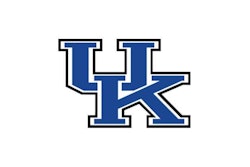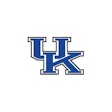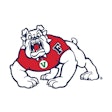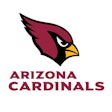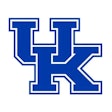![[Photos courtesy of St. Mary’s University, Rice Athletics Communications]](https://img.athleticbusiness.com/files/base/abmedia/all/image/2017/06/ab.1on1_617_feat.png?auto=format%2Ccompress&q=70&w=400)
It's called the Duke Model for a number of reasons. Its architect attended Duke University's School of Law, the Blue Devils basketball program is emblematic of big-time college sports, and the Rice Model sounded too agricultural for David Grenardo, who played football for the Owls in the mid-1990s. People are just starting to digest Grenardo's writings on collegiate student-athlete compensation, which suggest athletic conferences control payment amounts based on their own purse and individual performance — a player's availability (games started) and statistical impact (categories led), as well as conference members' post-season success. Poised to see his 46-page work published this year by the Brooklyn Law Review, the author believes this to be a better approach than the type of free-market system being fought for in the ongoing Jenkins v. NCAA class action. AB senior editor Paul Steinbach asked Grenardo, an associate professor of law at St. Mary's University in San Antonio, to make his case.
What letter grade would you assign the athlete-compensation progress made to date?
I think a deserving grade would be a C, at best. In terms of NCAA legislation that has allowed for covering the full cost of attendance, as well as a lot more access to food and paid meals, it's great. But college football and men's college basketball have turned into multibillion-dollar businesses, and everybody else is getting paid. Michigan football coach Jim Harbaugh makes $9 million a year, and some of his assistant coaches make over a million. You have athletic directors getting paid more than a million dollars a year. You have NCAA executives getting paid in the six figures. Everybody's getting paid except the college athletes who produce the product on the field.
Do you think of student-athletes as employees?
Absolutely. On Jan. 31, 2017, Richard Griffin Jr., general counsel of the National Labor Relations Board, sent a memo to regional directors and officers of the NLRB, and the whole point of the memo revolved around whether scholarship football players at Division I private institutions are considered employees under the National Labor Relations Act. Remember, this issue came up when Northwestern tried to unionize, and the regional director says, "Yes, you guys are employees," because the amount of time they spend on football — sometimes 50 or 60 hours a week versus the 20 hours a week that the players said they study — and the amount of revenue and publicity that they generate for the school and the fact that their time is controlled by the football team. The general counsel in that memo said, unequivocally, these football players are employees under the National Labor Relations Act, and it said as a result that they can engage in certain activities that the National Labor Relations Act provides for.
Why does your compensation model make the most sense?
The Duke Model is more like what you would see in a structured, negotiated agreement if the players or a players' union representative sat down with the NCAA and with the conferences. Conferences already share revenue, and they generate different amounts of revenue. The ACC last year made about $40 million. This year it's less than that, but over the last three years, it was about $100 million. The NCAA doles out that money, and the conference splits the profits. Those Power Five conferences are generating more revenue, so this model says, "Let's do it by conference." The proposal is great because it's flexible. If the base salary is $40,000 for an SEC player who starts all the football games during the year, Conference USA can say, "Alright, we're going to start at $20,000. We're going to reduce all these number by half, if that's what we can afford."
Doesn't that hamstring conferences outside the Power Five in terms of recruiting?
The argument is typically phrased as, "Well, now everybody is going to want to go to the Power Five conferences. People are not going to want to go to Conference USA because they're going to get paid a lot less." But the reality is everybody already wants to go to those Power Five schools. All the best players are still going to go to Ohio State, to Florida State, to Alabama. It's probably not going to change the dynamic of who goes where. What it's going to do, though, is allow college athletes at any school to at least get some compensation.
Will this idea offend amateurism purists?
I go through a couple of examples, case studies, where a starting player ends up having a great year, leading the team in statistics, individual honors, they get far in the playoffs — $82,000 a year. I don't think that would offend the average consumer who says, "Oh, wow, that college kid's making $82,000, but he's on 'SportsCenter' every week. He's creating incredible publicity and possibly money for his school." And I go through the other scenario, the backup player who makes $29,500, based on being a second-team guy and how far the team goes. Again, I don't think $29,500 is going to offend the average consumer.
What odds do you place on the Duke Model or anything closely resembling it being adopted by the NCAA?
I think if somebody looked at it today, they'd probably say 10 percent. But there are cases out there, such as Jenkins v. NCAA, which is asking for a free market — you get paid whatever the college can pay you — and I think that would be even scarier for the NCAA. If the Jenkins case makes it to trial, maybe the odds go to 20 or 30 percent. And if it's successful at trial, maybe that number jumps up to 50 percent or even higher, because the NCAA then says, "We'd rather have the Duke Model, where we can control the amount that college athletes are getting, as opposed to a free-market system, in which universities and colleges can pay whatever they want." I think that percentage is going to continue to increase as the NCAA faces more of these lawsuits that have a much better chance of winning. I think the tide is turning, and the more people who are out there talking about it, the more it's going to change.
This article originally appeared in the June 2017 issue of Athletic Business with the title "Everybody is getting paid except the college athletes" Athletic Business is a free magazine for professionals in the athletic, fitness and recreation industry. Click here to subscribe.















